Gardener’s Resolutions
December 30th, 2008
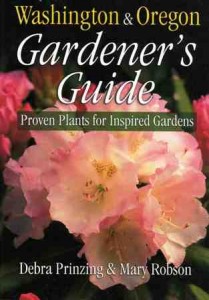 In early 2005, Cool Springs Press published the Washington & Oregon Gardener’s Guide, a book I co-authored with the wise and gifted garden writer Mary Robson. We combined our talents to share years of garden experience to help readers plan, plant, and maintain a beautiful and healthy garden.
In early 2005, Cool Springs Press published the Washington & Oregon Gardener’s Guide, a book I co-authored with the wise and gifted garden writer Mary Robson. We combined our talents to share years of garden experience to help readers plan, plant, and maintain a beautiful and healthy garden.
The book is filled with our personal recommendations of plants that thrive in the Northwest, presented in a concise, helpful format. The major challenge of writing WOGG, as we called it, was to limit ourselves to 186 individual plant selections, from annuals to vines. No gardener wants to be told she has to “choose” a finite plant list!
 Our fabulous publicist, Lola Honeybone, who now runs Media Workshop, a Nashville-based book PR shop, suggested that Mary (shown at left) and I develop a lecture to accompany our book-signings and appearances. She dreamed up the title “Seven Habits of a Highly Successful Gardener.” Lola’s clever angle brought Mary and me together for a 2005 lecture at the Northwest Flower & Garden Show in Seattle. It was so much fun to plan this talk knowing Mary and I would have a friendly give-and-take as we walked the audience through our Seven Tips.
Our fabulous publicist, Lola Honeybone, who now runs Media Workshop, a Nashville-based book PR shop, suggested that Mary (shown at left) and I develop a lecture to accompany our book-signings and appearances. She dreamed up the title “Seven Habits of a Highly Successful Gardener.” Lola’s clever angle brought Mary and me together for a 2005 lecture at the Northwest Flower & Garden Show in Seattle. It was so much fun to plan this talk knowing Mary and I would have a friendly give-and-take as we walked the audience through our Seven Tips.
Later, our friend Richard Turner, editor of Pacific Horticulture, asked us to turn the lecture into an article. Here is the article, from the journal’s Winter 2006 issue. It seems appropriate to share this as we approach 2009 – and I encourage you to adapt these tips for your own New Year in the Garden:
Seven Habits of a Highly Successful Gardener
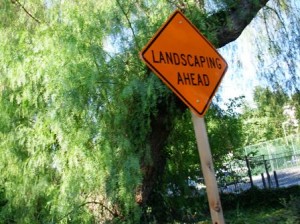 Gardeners in the west enjoy the unique luxury of living with few rules about what’s right or wrong in the way we grow our plants. We appreciate and adapt to our garden’s cultural conditions. We are overwhelmed with a seemingly endless selection of excellent, healthy and suitable trees, shrubs, perennials, annuals, vines, bulbs and ground covers from which to choose for our landscapes.
Gardeners in the west enjoy the unique luxury of living with few rules about what’s right or wrong in the way we grow our plants. We appreciate and adapt to our garden’s cultural conditions. We are overwhelmed with a seemingly endless selection of excellent, healthy and suitable trees, shrubs, perennials, annuals, vines, bulbs and ground covers from which to choose for our landscapes.
In the Pacific Northwest [my former home], we’re particularly lucky to have temperate conditions where it’s not too hot – and not too cold. This welcoming, plant-friendly climate bestows added blessings. Imagine how hard it was for us to compile a regional gardening book and limit ourselves to only 186 great plants!
Perhaps the horticultural excesses in our lives call for a little discipline. Certainly, we want to be good stewards of our gardens, both to ensure our immediate enjoyment and the long-term health of the plants and places we tend.
So, with apologies to the original “7 Habits” author Steven R. Covey, we offer the following Seven Habits of a Highly Successful Gardener:
HABIT ONE: HONE YOUR POWERS OF OBSERVATION
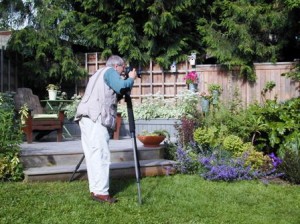 Invest time in knowing your garden’s micro climate, noting everything from light patterns to the location of sheltered or exposed spots. This skill also benefits plants, as you can watch for clues about the type of care they need. As you assess your site, take note of the following:
Invest time in knowing your garden’s micro climate, noting everything from light patterns to the location of sheltered or exposed spots. This skill also benefits plants, as you can watch for clues about the type of care they need. As you assess your site, take note of the following:
Follow the shade and plant accordingly
Know where it’s hot and dry
- Identify the toughest challenges, such as parking strips and other high-traffic spots
- Exploit the garden’s unique protected spots and micro climates such as courtyards or south-facing walls
- Invest in a thermometer and a rain gauge to measure the highs and lows from season to season
HABIT TWO: CHOOSE PLANTS YOU LOVE
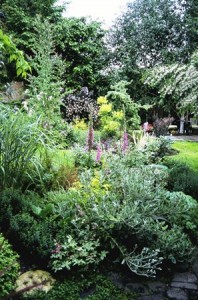 With thousands of plants from which to choose, you’re more likely to realize success as a gardener if you enjoy the plants you grow. If a plant is high-maintenance, aggressive or an under performer, it’s okay to edit it (okay, we mean dig it up and toss it) from the garden!
With thousands of plants from which to choose, you’re more likely to realize success as a gardener if you enjoy the plants you grow. If a plant is high-maintenance, aggressive or an under performer, it’s okay to edit it (okay, we mean dig it up and toss it) from the garden!
As we gardeners mature, we move beyond our passion for lavish blooms to a humble appreciation for stunning specimen trees and shrubs. We embrace plants with unique foliage and plants that serve specific roles in our design scheme. Here are some of our tips for selecting plants:
- When possible, purchase your plants from a local grower. This practice will introduce you to excellent regional nurseries that are growing plants in conditions similar to your own backyard.
- Fall in love with unique specimens. Also called collector’s plants, these one-of-a-kind gems deserve a place of honor in the landscape. Grow them where you’ll appreciate their features every day. In Mary’s garden, she cherishes the diminutive Pinus hokkaido (named after a Japanese island where its seed was collected). In Debra’s garden, she enjoys the brilliant golden form of Arizona cypress (Cupressus macrocarpa ‘Limelight’).
- Single out stunning ornamental natives. We love Arbutus unedo for its four-season interest.
- Watch for newer introductions. If they prove viable, grow lots of them. Brunnera macrophylla‘Jack Frost’ is a great example of a once-pricey collector’s plant that’s now affordable to grow en masse.
HABIT THREE: DO YOUR PLANT HOMEWORK
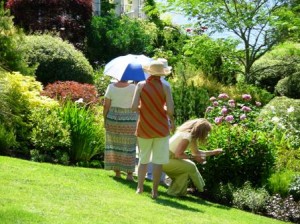 Find useful reference books and plant lists, tour gardens, visit nurseries and keep learning about your own plants.
Find useful reference books and plant lists, tour gardens, visit nurseries and keep learning about your own plants.
Local garden tours have introduced us to the creative efforts of hundreds of gardeners and their private “Edens.” Likewise, when we visit botanical gardens, arboretums and nursery plant displays, we amass an abundance of great ideas for plant choices, placement and design.
Be a student of your surroundings and do your plant homework:
- Jot down notes and ideas in a garden notebook; bring along a camera to record stunning displays.
- Learn about unusual plants in fantastic settings. Inevitably, once you see a terrific plant used well in the landscape, such as Robinia pseudoacacia ‘Frisia’, you’ll miraculously start noticing its presence in other gardens you admire. And, naturally, you’ll want to have one in your own garden.
- Observe great combinations: Here’s a combo that caught our eye in a water-wise garden: Allium christophii, the variegated form of Agave americana and Artemisia ‘Powis Castle’.
- Note “happy pairings” of plants, such as Euphorbia polychroma with Papaver orientale or “happy coincidences,” such as Acer palmatum ‘Sango Kaku’ with a coral-flowering Pulmonaria sp.
HABIT FOUR: KNOW YOUR SOIL
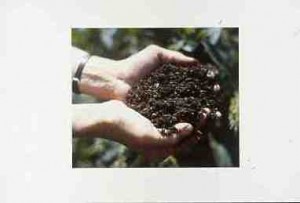 When you understand the conditions that add up to healthy soil, you have the key to success. A high “Soil I-Q” will help you and your plants survive the Northwest’s soggy winters. In other regions, you may be gardening in sandy or hard-pan soil. Once you know the composition of the soil in your garden, you can begin improving it.
When you understand the conditions that add up to healthy soil, you have the key to success. A high “Soil I-Q” will help you and your plants survive the Northwest’s soggy winters. In other regions, you may be gardening in sandy or hard-pan soil. Once you know the composition of the soil in your garden, you can begin improving it.
- Touch, feel, test and know your soil texture and profile
- Good drainage is one of the most important soil issues for plant health in our climate
- Rely on ground covers to hide weeds and keep soil from drying out. Ajuga reptansis one ground cover that can tolerate both dry and moist soils.
HABIT FIVE: BE WATER WISE
 When you understand how to cope with summer drought, your plant choices will begin to reflect that reality. Gardeners in the maritime Northwest region have a further challenge, which is choosing plants adapted to dry summers and wet winters.
When you understand how to cope with summer drought, your plant choices will begin to reflect that reality. Gardeners in the maritime Northwest region have a further challenge, which is choosing plants adapted to dry summers and wet winters.
Try these tips for water-smart gardening:
- Grow native plants in combination with non-native species that prefer similar conditions, such as plants from Mediterranean regions
- Provide good drainage for plants that hate soggy winter conditions. Mulch with gravel to encourage drainage, or grow moisture-sensitive plants in containers or raised beds.
- Evict the “water hogs” from your garden, unless you have a bog.
- Group thirsty plants together so you can irrigate in “zones” throughout the garden. Similarly, group drought-tolerant plants together for limited irrigation.
HABIT SIX: TAKE ADVANTAGE OF EVERY MOMENT
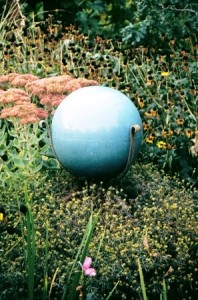 Don’t let gardening tasks overwhelm you.
Don’t let gardening tasks overwhelm you.
If you see a weed – pull a weed; if your roses need deadheading – grab the snips and deadhead away.
Tend to tasks in short chunks of time and you’ll have a well-maintained garden that’s easy to enjoy.
In other words, remember to divide your time between “doing” and “being” in the garden:
- Recruit loved ones to help. Friends and family (especially children) can lighten your gardening duties and add laughter to those chores.
- Set realistic expectations. While beautifully groomed, highly formal gardens aren’t always ideal for many backyards.
- Diversify your choices. “Mono-cultures” aren’t the best environments for our plants.
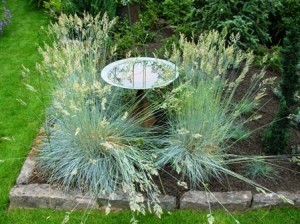 Grow plants where they’ll perform best, whether it’s in the sun or shade. Watch your plants for clues. When it’s flopping over or scorched, that means it’s in the wrong spot!
Grow plants where they’ll perform best, whether it’s in the sun or shade. Watch your plants for clues. When it’s flopping over or scorched, that means it’s in the wrong spot!- Do your chores. If you garden in quick bursts (15-20 minutes), you’ll not feel overwhelmed by those everyday maintenance jobs.
- Enjoy small details of a plant’s growth cycle.
- Let nature be your co-designer. Joyous results can occur when two perennials commingle on their own.
- Delight in surprises, such as a stray tulip that appears where least expected.
- Plant for wildlife. Invite pollinators to your garden’s nectar sources with plants like Echinacea purpurea.
- Place containers where nothing else will grow.
HABIT SEVEN: CELEBRATE AND SHARE YOUR SUCCESSES
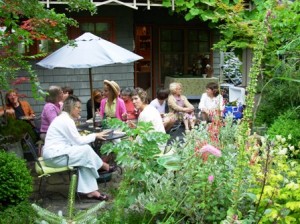 Enjoy your garden during every season. Share plants and ideas with other gardeners along the way. Embrace the generous spirit of gardening and try these healthy, lifelong habits:
Enjoy your garden during every season. Share plants and ideas with other gardeners along the way. Embrace the generous spirit of gardening and try these healthy, lifelong habits:
- Reduce the amount of lawn in your garden. As you do so, you can incorporate more favorite plants, not to mention sculpture and artwork
- Add comfortable seating, benches or hammocks to your landscape. Rest and enjoy the beauty around you
- Incorporate paths in the garden. Take a stroll, slow down and explore your own garden sanctuary
- Distribute bouquets and baskets of garden bounty. Share your harvest with others
- Note the inherent beauty of every plant – not just blooms, but structure, foliage, berries, bark and form
- Keep splendor at hand and grow a stunning plant right by your front door. When possible, plant for appealing fragrance.
- Grow low water-use plants that are as attractive as thirsty ones.
For more than a decade, Mary Robson authored “The Practical Gardener” column for The Seattle Times. She also wrote Month-by-Month Gardening in the Northwest (Cool Springs Press) and is the Western Washington editor of Master Gardener magazine.









December 30th, 2008 at 2:00 pm
Thank you so much for sharing this wonderful article! I really enjoyed it. As a teacher myself and longtime follower of Mary Robson, I relate thoroughly to the “7 Habits” method for teaching gardening techniques and methods. I use a similar system for most of the class outlines that I write.
Beginners and advanced gardeners alike can get great bits of info from this list!
Best regards,
The Personal Garden Coach
Christina Salwitz
December 30th, 2008 at 10:24 pm
Hi, Debra- If there was room for one more “rule” it would be to know your limit. Whether time or money- it is frustrating to stop before a piece of the vision was complete or done being maintained.
Looking at the weather channel- I would say your new home in Southern California gets the award for temperate weather over the Pacific Northwest.
January 1st, 2009 at 3:54 pm
Happy New Year, Debra. May your days ahead be filled with blessings untold. I am sending this link to my friend, Wanda, who is a transplant in WA. She’s doing fine, but your book will make her happy.~~Dee
January 5th, 2009 at 2:28 pm
[…] author of the wonderful book “Stylish Sheds and Elegant Hideaways,” offers the seven habits of highly effective gardeners, to make 2009 a more successful year in your garden. (No. 2: Choose plants you […]
January 8th, 2009 at 7:18 am
Debra — this is an awesome post! I would like to spread the word about your 7 habits article with my blog readers. Okay if I “Share This” with my readers?
I am really enjoying your book, “Stylish Sheds” — but, I have trouble getting it away from my husband! Thanks to Helen (we had a wonderful time chatting over coffee the other day).
Cameron
January 11th, 2009 at 7:21 am
I have posted the link to your Seven Habits story.
Thanks!
Cameron
January 12th, 2009 at 7:01 am
I just arrived here through the link on Cameron’s blog. This is an excellent summary of what is needed to be a successful gardener!
Reminding us to also enjoy and just “be” in the garden is so important.
January 22nd, 2009 at 6:20 am
Habit #6 was good for me because I have a hard time distinquishing between “doing” and “being” in the garden! there are days when I have nothing to leave my home for and go out to the garden and when I do think to check the time, I find I’ve been there for most of the day and I’ve basically been doing the chores. So this year I will try to do my chores as they happenand and I’ve learned the 108 moves of the art of Tai Chi and I plan to due this every morning in my garden! ahhhh Bliss!
April 12th, 2010 at 12:13 pm
Excellent post, I’m regular visitor of your blog, keep up the great work, and I’ll be a regular for a long time.